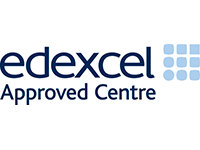At KIST, we define assessment as the collection and analysis of data about student progress. We believe that:
- Assessment is an integral part of the teaching and learning process.
- Assessment should be designed to support student learning and improve teaching.
- The reasons for assessment, the criteria to be assessed, and how work will be assessed should be communicated to, and understood by, all stakeholders.
Types of assessment
Teachers are encouraged to use a range and combination of assessment strategies to ensure an accurate picture of student progress. These include both ongoing assessments and end of unit, semester and year assessments. Types of assessments may include: observations, discussions, performance tasks, oral presentations, interviews, essays, short answer or essay questions, tests and the like.
All summative assessment tasks are accompanied by a rubric that defines the criteria being assessed and provides clear, task-specific clarifications for each level of achievement that guide students in completing the assessment task in line with task objectives.
Whenever possible, students use the rubric to self-assess their work against the appropriate criteria as doing so promotes better student understanding of assessment criteria and task expectations and should thereby positively influence performance. Peer assessment is also encouraged.
Communicating about achievement
In the Elementary School, formal communication about student achievement and progress is made in the following ways:
School reports
School reports inform parents, students, administrators and future educators about student progress against specific criteria or indicators, and provide teacher comments on progress to date.
- Quarter 1 Progress Report (November): an interim report on student progress to date with teacher comments identifying areas of concern.
- Semester 1 Report (February): a full report showing performance against all assessment criteria/categories for semester 1 with teacher comments describing the content of learning for semester 1 and personalized comments on performance. For students receiving English language support (ELS), a statement on progress in ELS is also included.
- Semester 2 Report (June): a full report showing performance against all assessment criteria/categories for semester 2 with teacher comments describing the content of learning for semester 2 and personalized comments on performance. For students receiving English language support (ELS), a statement on progress in ELS is also included.
Students must have been in attendance for at least two-thirds of the instructional days each semester to receive semester reports.
Parent/Teacher/Student interviews
Parent/Teacher/Student interviews, held in November, inform parents and students about general student progress and about how the student has adjusted to the demands of a new grade level.
Student-led conferences
Student-led conferences, held in March, inform parents about student progress using the student’s portfolio, and allow parents to get a picture of their child’s ability to self-assess, set goals and be an independent learner. The conferences encourage dialogue between parents and children regarding learning. As an important part of the student assessment cycle, participation by parents is compulsory.
Portfolios
Portfolios are an important assessment tool that contain evidence of student learning and achievement over time. They provide an opportunity for students to communicate their learning, to celebrate their progress, to self-assess and to set specific learning goals. Portfolios are an extension of student agency as items included are purposefully selected by students themselves in order to showcase their work. They provide a body of work that can be revisited by students in order to extend their future learning and reflect on progress in relation to goals that were set.
Portfolio entries aid in the generation of both short- and long-term future goals. Portfolios are important for teachers as they can help identify student strengths and weaknesses. They also aid in informing parents as to the depth and breadth of the curriculum and their child’s ability to work within the scope of the lessons. The students learn important self-reflection techniques as they consider their own participation in the work which helps develop critical thinking skills.
In the Elementary School, students take their portfolios home to share with their families three times a year: in autumn after the Parent/Teacher/Student interviews, in spring following the Student-Led Conferences, and on the last day of school in June.
Diagnostic testing
In addition to internal assessments, diagnostic tests inform parents of student performance on implemented standardized testing that are conducted at certain times during the school year. Results of such testing are communicated to parents upon processing. Diagnostic test performance is not considered when determining student grades in any course; however, such data may be used to make decisions related to grade progression and/or support interventions such as course placement or enrollment in supplementary instructional programming.
Tests used for diagnostic purposes in the Elementary School include:
- National Curriculum for England’s Key Stage testing in English and mathematics (Grades 1 to 5)
- Edexcel iPrimary testing in English and mathematics (Grade 5)
- International Schools’ Assessment (ISA) testing in English reading and writing and mathematical literacy (Grades 3 to 5)







